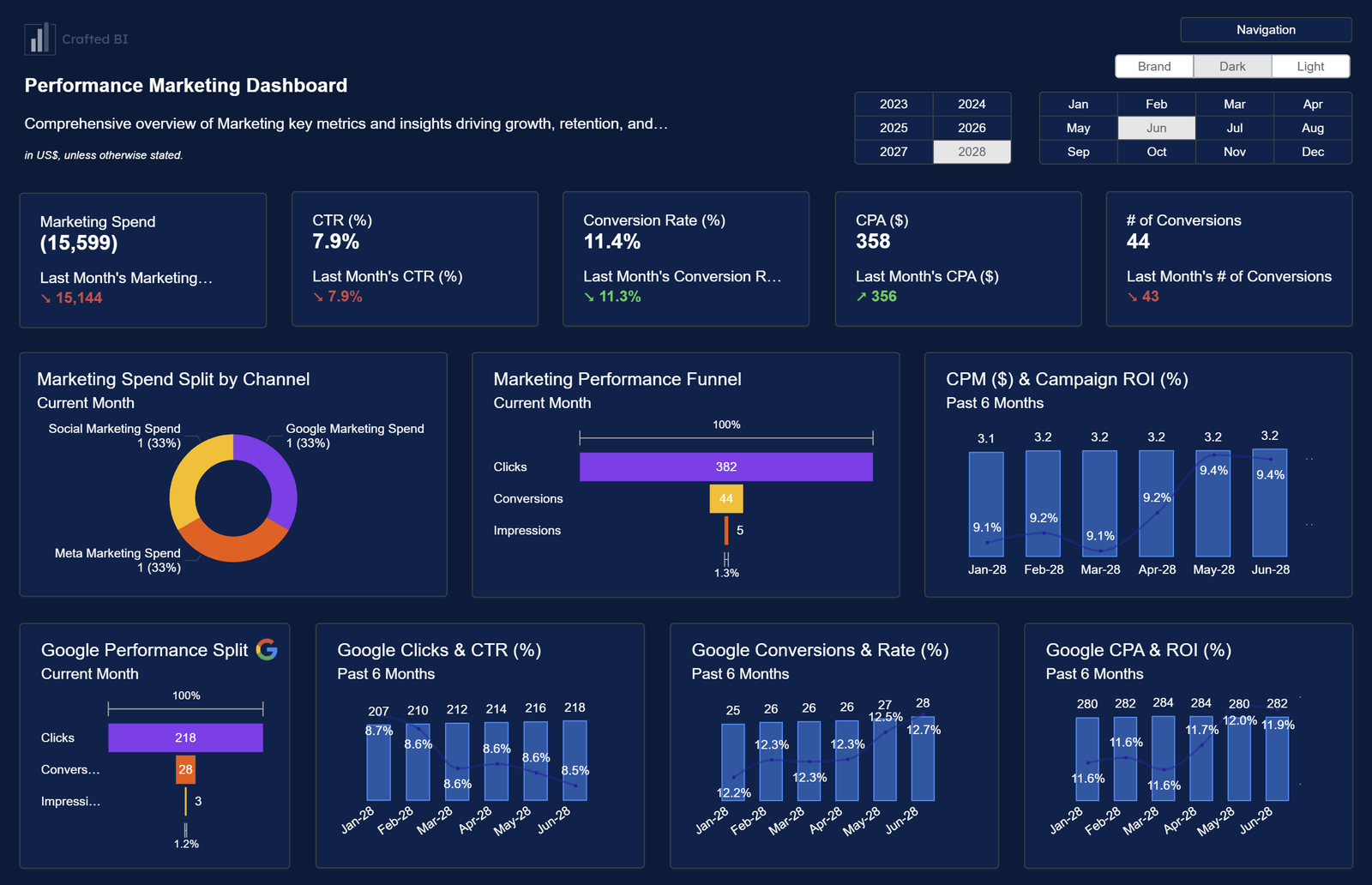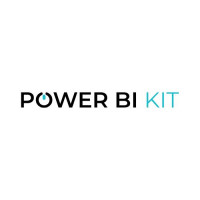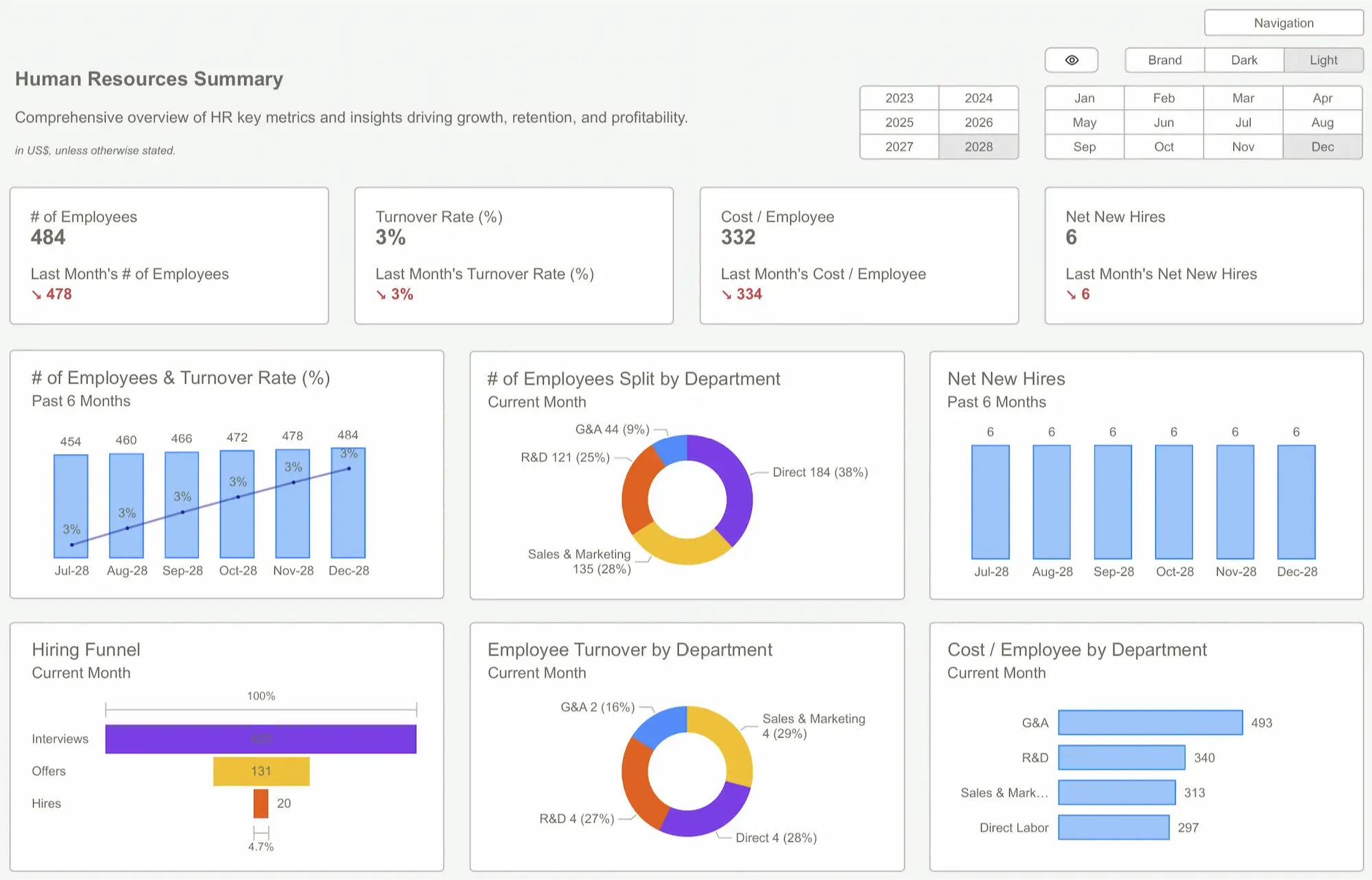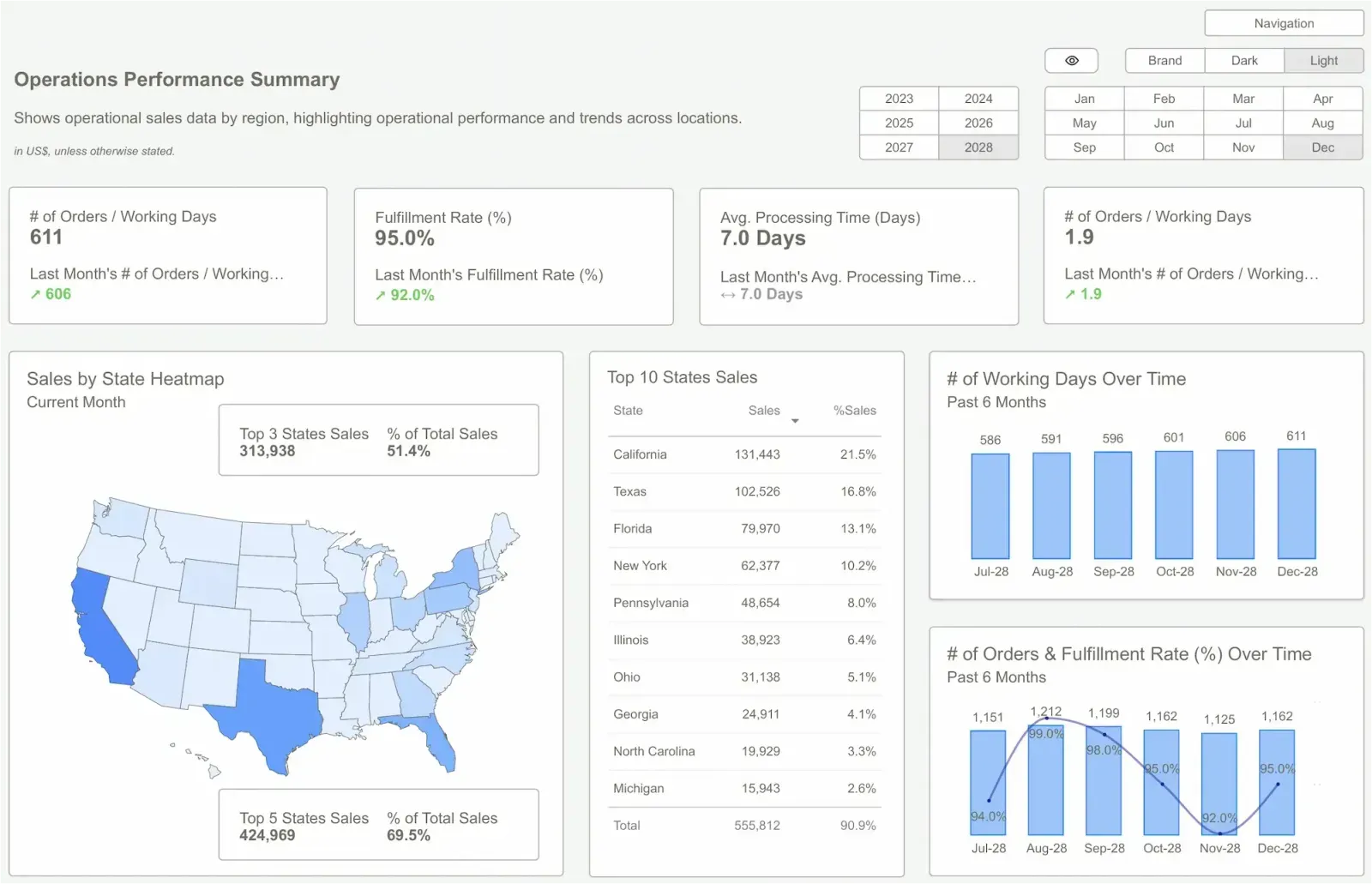Improve Power BI Dashboard Design by Following These Best Practices

Strong 8k brings an ultra-HD IPTV experience to your living room and your pocket.
Power BI serves as a preferred solution for enterprises that aim to access their data potential and obtain better decision-making outcomes. The process of making a dashboard with a well-designed structure extends beyond data retrieval. Building effective Power BI dashboards demands systematic arrangements and familiarity with important visualization guidelines. The quality of dashboard design determines whether information presentation remains simple or whether the content becomes complicated enough to obstruct user insight retrieval. The following blog provides essential Power BI dashboard design guidelines to create dashboards that both look good and deliver essential insights.
Key Principles for Effective Power BI Dashboard Design
A clean design system in Power BI dashboard design enables users to connect with data instantly while understanding the information without difficulty. The following essential best practices let users create impactful dashboards:
Focus on Simplicity and Clarity
The essential principle in Power BI dashboard development is to keep it simple. Dashboard visualizations become less effective when they combine numerous nonessential elements with confusing information. The user interface should contain essential metrics that users need for their decision-making processes. A viewer will experience less confusion when there are fewer visual elements displayed on the interface.
The use of white space follows a strategic pattern to direct user eye movements across the dashboard interface. Each chart demands descriptive titles and labels to assist users in understanding the dashboard's contents without difficulty. Users must receive valuable insights without becoming confused or requiring extensive investigation of the information.
Prioritize User Needs
Each Power BI dashboard design needs to put users at the core of the design. To create relevant dashboards, one must first identify and understand the target audience and their requirements. The dashboard should also contain the necessary information for users to understand at first glance. Users require information about the necessary next steps from the analyzed data.
Start designing your Power BI dashboard by building user personas to learn about your audience's challenges and goals. Therefore, you want to adjust the data points and visualizations. According to the user's needs, a more efficient and impactful dashboard has been created.
Choose the Right Visuals
Power BI dashboard design is very conscious of the choice of visuals. However, unlike charts, graphs, and tables that show data well, avoid these simply because they vary. Every visual element has a preconceived purpose. Thus, bar charts are ideal for comparing categories, while line graphs are appropriate when changes over time must be tracked.
Use color sparingly to highlight what you want the viewer to see, but do not overuse too many colors. The color usage must be consistent so that users can easily identify what kind of data they are looking at. Try to keep the visuals simple to read and readable on various screen sizes.
Optimize Layout and Structure
Power BI is all about creating intuitive dashboards, so an intuitive layout is essential in any dashboard design. Organize group-related information to ensure a natural flow of data. The most important KPIs should appear first, along the vertical side of the screen, from left to top. If necessary, keep secondary metrics lower on the page or within other tabs.
What does one metric have to do with any other? What does the data say in order over time, from one transaction to the next? Tell visuals in a story, with well-organized visuals to guide the viewer from one visual insight to another. For example, structuring the layouts prevents visual confusion and lets you spot the trend and the outlier easily.
Implement Interactive Features
Your Power BI dashboard design should include interactivity to keep users excited and allow them to explore data more deeply. Drill-throughs, slicers, and tooltips can assist users in navigation the data dynamically.
Interactivity also means users don’t have to absorb and remember everything being displayed—if they want to focus on something, they can without being overwhelmed by everything else. Make sure your interactive features are as easy to use and as integrated with the overall design as possible.
Conclusion
The way data is presented on your dashboard is crucial to you, as you would be using Power BI and your audience. If we concentrate on simplicity, a user-looking design, and the proper visuals, dashboards become helpfully simplified tools for understanding data and helping users make data-driven decisions. A power BI dashboard design that has been optimized will be a helpful one between your business and your data, where it is accessible and actionable. While showing data on a Power BI dashboard is important, Power BI dashboard design is much more about telling a story with the data. In order to illustrate how to elevate your Power BI dashboards, implement these best practices.
Note: IndiBlogHub features both user-submitted and editorial content. We do not verify third-party contributions. Read our Disclaimer and Privacy Policyfor details.




